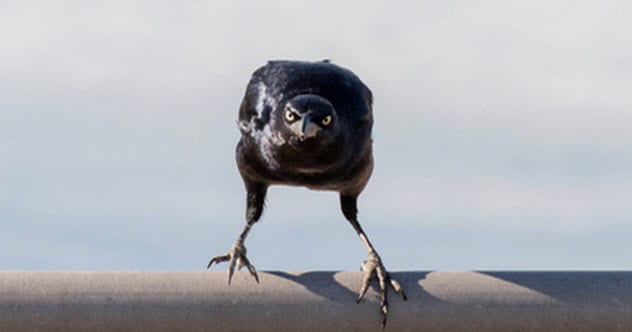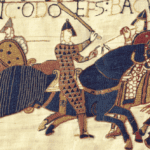A crow is a bird of the genus Corvus. You’ve probably seen crows around, but did you know just how fascinating they are? They’re not just black birds that hang out in groups; they possess some truly unusual capabilities that might surprise you. Let’s dive into ten amazing facts about crows that you probably didn’t know.
Crows Recognize Faces and Will Pay You Back
Crows have an impressive memory for faces. Research shows they can remember humans and other birds that have treated them well or poorly. They react accordingly, holding grudges or showing favor. What’s more, they pass this information on to other crows, even future generations. Imagine being a crow, and your parents warning you away from someone because they were mean to them!
In one study, researchers wore different masks when approaching crow nests. One group trapped and removed crows, while the other simply walked around. Years later, the crows mobbed anyone wearing the mask of the trappers, proving their incredible long-term memory and ability to recognize faces.
Some Crows Can Read Traffic Lights
Birds have superior color vision compared to humans. They can see the colors we see, plus the ultraviolet (UV) spectrum. They also have better visual acuity, allowing them to discern subtle differences in shades. But can they understand what these colors mean? Some crows in Japan seem to.
On a university campus in Japan, carrion crows patiently wait behind humans for traffic to stop. When the light turns red, they hop onto the road, drop nuts, and wait for cars to crack them open. Once the light changes again, they collect their meal. This behavior has been observed since around 1990, showing remarkable adaptation and problem-solving skills.
Crows Are Great “Impersonators”
Crows are known to mimic human voices and the sounds of various animals. Unlike parrots, they use their syrinx (a bird’s voice box) instead of their tongue to talk. Crows also have an excellent memory, learning and remembering words faster than other bird species. You might hear crows in zoos or wildlife parks saying “Hello” to visitors. They can mimic human voices and understand their meaning, adding to their impressive communication skills.
A Group of Crows Is Called “Murder”
Crows live worldwide, except in Antarctica, and are notorious for raiding crops. Farmers often dislike them because they’re intelligent and operate in groups. Crows are omnivorous scavengers, often feeding on dead animals. Historically, they were found on battlefields, cemeteries, and gallows, leading to a bad reputation and associations with evil.
Superstitions say that crows form parliaments to punish misbehaving members, even to the point of murder. While this is just a superstition, crows do kill each other during territorial fights, justifying the term “murder”.
Crows Have Caused Power Blackouts in Japan
Since the 1990s, Japan’s crow population has boomed due to a high standard of living. However, they became a menace by using electricity and fiber-optic cables for their nests, sometimes building them on electric transformers. This led to utility companies forming patrols to remove crow nests from electric facilities.
Between 2006 and 2008, crows stole nearly 1400 fiber-optic cables from Tokyo power providers, causing about 100 power failures per year at Chubu Electric Power Co. The company installed artificial nests on towers above power lines, which successfully diverted the crows. In Japan, crows have even been known to steal candy from children and ducklings from zoos.
Crows Can Make Their Own Tools
Like chimpanzees and orangutans, crows can make and use tools. The New Caledonian crow is famous for creating hooked tools by bending pliable materials. Researchers have studied how these crows fashion and use tools in controlled settings and in the wild.
In one study, crows were presented with a puzzle box containing food behind a door with a narrow gap. Sticks were scattered nearby. The crows instinctively used long sticks to reach the food. When only short sticks were available, some crows joined them together to create longer tools. One crow, named Mango, even managed to join three or four sticks to create a complex hook, proving their impressive problem-solving abilities.
Older Crows Help Parents Raise New Chicks
Crows exhibit a strong family life. Unlike most bird species, American crows may stay with their parents for up to five years, helping to raise their younger siblings and build nests. They retain family bonds even after leaving. In one instance, a two-year-old crow visited its family after a year away and was welcomed back.
Crows Have Local Dialects
Crows produce over 20 different calls, using four basic sound groups: the classic “caw,” the harsh “scold,” the courting “rattle,” and the juvenile begging “grunt.” These sounds help them communicate about food, warn of danger, and simply greet each other. But can you understand them if you’re far from home?
Crows can mimic human voices and animal sounds and learn a new flock’s dialect by mimicking the dominant members. These calls, like human dialects, vary from place to place, each unique to a particular locality.
Crows Hold a Funeral of Sorts
Humans aren’t the only ones who understand death and mourning. When a crow dies, other crows gather around it without touching it. Some studies suggest this gathering helps them understand the cause of death, aiding their survival. Kaeli Swift, at the University of Washington’s Avian Conservation Lab, conducted research where she and an assistant wearing a mask held a dead crow while visiting a familiar group of crows to study their reactions.
Crows Can Solve Puzzles and Are Capable of Analogical Reasoning
Crows can solve puzzles by planning their next moves and understanding analogies. In one study, a crow was presented with a tube of water containing a floating treat that was out of reach. With lightweight and weighty objects around the tube, the crow ignored the light ones and dropped the weighty ones into the tube, raising the water level and retrieving the treat.
In another trial, if a crow received a reward for choosing a particular object, it could deduce that choosing a similar object would unlock another reward, proving their ability to understand analogies.
From recognizing faces to holding funerals and solving complex puzzles, crows never cease to impress us with their cognitive abilities and social complexity. These ten facts only scratch the surface of what makes crows some of the most fascinating birds on our planet.
What do you think? Let us know in the comment section below!










